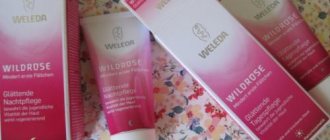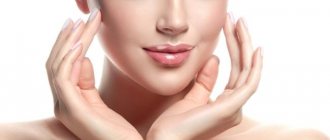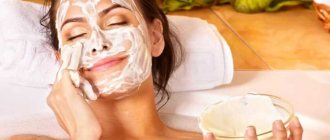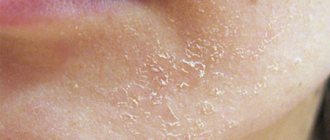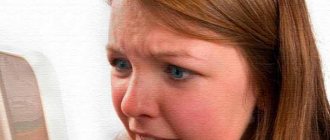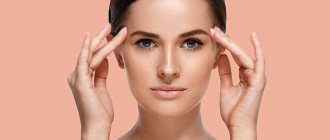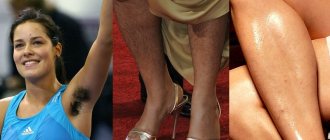What are the reasons for increased dry skin on the knees?
First of all, you need to find out what contributed to the increase in dry skin on your knees. Based on the source, the most effective treatment is selected.
The symptom accompanies many physiological disorders in the body, especially those of an endocrine nature. The dryness of the dermis increases not only on the knees, but also often on the elbows. Such clinical manifestations signal some kind of failure.
Possible reasons include:
- Dry skin on the knees and elbows can be a symptom of diabetes. The disease is characterized by disruption of the natural metabolism of fats, proteins and carbohydrates, increased blood glucose levels and decreased insulin. In most cases, the symptom occurs at the initial stage of diabetes development.
- On the knees and below, areas of peeling appear in hyperthyroidism and hypothyroidism. Pathologies have an endocrine etiology and are characterized by an increase or decrease in the release of thyroxine and triiodothyronine into the bloodstream. Associated symptoms include increased irritability and aggression.
- Skin diseases such as eczema and psoriasis occur with increased dryness of the skin. At the site of the lesion, dark scales appear on the legs and a red rash on the knees.
- With scleroderma, not only peeling occurs on the knees, but also swelling and pain on palpation of areas with damage to the epidermis.
Other reasons
- The development of iron deficiency anemia is accompanied by thinning of the skin, the appearance of areas with peeling and increased dryness.
- If a hormonal imbalance occurs, which often occurs during puberty, menstruation, pregnancy, menopause, not only problems with the skin arise, but also many others, including changes in the emotional background. Dry skin on the knees of women is more common.
- Insufficient levels of vitamins and beneficial microelements in the body are a common cause of thinning of the epidermis and increased dryness, in particular on the knees and elbows. This applies to deficiency of ascorbic acid, retinol, vitamin E.
- The reason why the skin on your knees is dry may be a change in atmospheric conditions. For example, in the autumn-winter period, during the heating season, when the dry air in the room increases, an exacerbation of the symptom occurs.
Knees often dry out in people who abuse water procedures and the pool. The culprits of increased dryness of the dermis are the chlorine contained in the water, its high temperature, gels and other care products.
How to get rid of dry and flaky skin on elbows and knees
Once we have figured out the reasons, we will begin to solve them. The main thing is to correctly determine the cause of roughening of the skin; when you determine this, begin treatment as soon as possible. Experts will best help you determine the diagnosis; first, contact an endocrinologist, he will be the one who will help determine the causes of unpleasant symptoms. First of all, the endocrinologist will be able to answer whether peeling of the skin is associated with hormonal problems. If yes, then in this case the problem will have to be solved under the supervision of a doctor and with medication.
If the problem is not hormones, then the skin needs to be moisturized with cosmetics at home. You can also use homemade effective remedies to combat dry skin. But it’s not just cosmetics that need to be used to correct the situation. Eat plenty of fresh fruits and vegetables containing vitamins C, A and E, as well as foods containing fats.
We recommend that you prepare the effective remedies presented below. Using them, you will not only quickly get rid of dry skin on your knees and elbows, but also save on expensive cosmetics sold in stores.
How to deal with the symptom
Treatment of areas with increased dryness on the knees is determined by taking into account the underlying cause of this condition. In any case, complex therapy is indicated, which consists in eliminating the source of pathology and disturbing symptoms, especially peeling.
First of all, you need to take care to thoroughly clean the affected area. It is recommended to avoid using regular soap, which further dries out the epidermis. To cleanse the dermis, but eliminate the risk of its hardening, special emollients are used in the form of foam, which is intended for sensitive skin types.
After you have cleansed the skin, you need to remove the stratum corneum. For this purpose, a bioscrub is used, which contains fruit acids and substances beneficial to the skin.
By removing dead cells, the appearance of the epidermis will immediately change. However, despite the effectiveness of such products, you should not abuse them, since the skin will simply “get used” to them, and the peeling will only intensify.
The third stage of getting rid of dryness is moisturizing, which is carried out using a high-quality nourishing cream. They use the product for the face, since specialized preparations for the knees are unlikely to be found. The nourishing product is alternated with a moisturizing one.
Home methods
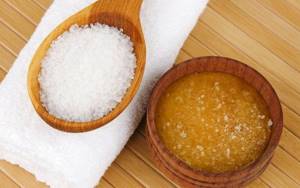
- No less effective are folk remedies that well moisturize the dermis, nourish, and accelerate the recovery of the skin. For example, prepare the following composition: take vegetable oil (1 tbsp), lemon juice (10 tbsp), mix the components, apply as a mask to the affected areas. After 15-20 minutes, the composition is removed with a cotton swab or warm water.
- Another useful composition: take regular salt (2 tbsp), add honey (2 tbsp), mix, you can pour in a small amount of castor oil. The result is a therapeutic scrub that fights dead tissue and softens the epidermis. Prepare a product based on coffee grounds, cocoa powder, and any essential oil.
It is not recommended to abuse water procedures. Of course, spending 15-20 minutes in a warm bath with the addition of herbal decoctions or infusions is useful, but frequent use of such a procedure is harmful to the health of the skin, which causes it to become rough and dry.
If there are areas with peeling and redness, use lemon or grapefruit juice, which is used to wipe the skin throughout the day. This will help soften it and increase elasticity. Darkened and dry areas of the knees are lightened and softened by treating the area with cucumber juice or bearberry extract throughout the day.
If folk remedies do not help eliminate the unpleasant symptom, you can use ready-made pharmaceutical preparations, for example, Comage Corporel Exfoliant exfoliating scrub, Rich Renewal Pucker moisturizer, Nutri Extra Creme restorative nourishing cream.
Conclusion
In any case, consult a doctor to determine the cause of dry dermis on the knees. This is especially true in cases where local remedies, including pharmaceutical ones, do not help relieve the symptom. Perhaps the cause lies deeper in the body and requires oral medications.
Main causes of dry knees
In adults, roughness develops against the background of several problems:
- lack of vitamins A and E
(often manifests itself seasonally, worsens in winter and spring, smoothes out in summer-autumn); - clothing made from unnatural or coarse fabrics
(wool without tights, corduroy and other materials); - hormonal imbalances can also manifest as severe itching and cracks;
- too little vegetable fats in the body
, insufficient consumption of oils and fish.
Common reasons for an adult and a child may be: a tendency to allergies, frequent kneeling (children play, adults can work in this position), a tendency to allergic reactions. In children, bumps are especially common; roughness and roughness can be a symptom of allergies or a tendency to eczema and other skin diseases.
The skin of the knees is regularly exposed to the environment, most often bending, so the appearance of roughness is a natural age-related process. After 35-40 years, it is rare that the skin in these places does not become drier and denser than in other parts of the body.
Correct diagnosis
You can identify the causes of dry skin in a child and an adult from a doctor, and only then should you begin to eliminate the pathology with medications, folk recipes and other methods:
- the examination should be prescribed by an endocrinologist
; for hormonal disorders, drug therapy is used under the strict supervision of a physician; - if no problems are identified, use moisturizing cosmetics or home recipes;
- A sufficient amount of foods with vegetable fats and vitamins A, E, C are introduced into the diet.
Read: Hair removal above the upper lip
The process of eliminating rough skin on the knees should consist of several stages.
How to treat pain in the elbow joint of the hands and knees?
Joints are movable bone joints covered with a joint capsule, inside of which there is synovial (lubricating) fluid. The joints are located where obvious movement occurs: flexion and extension, abduction and adduction, rotation.
The most likely causes of joint pain:
- After recent physical stress
Joint pain that occurs after some time (several hours, days) after intense physical activity occurs in all people without exception and does not require seeking medical help.Joint pain associated with recent physical activity is not severe, is aching in nature, can intensify with movement and disappears with rest. In some cases, after strenuous physical labor, slight redness of the skin in the joint area is observed.
Usually, these symptoms in the joints go away on their own after a short rest (several days). If the pain is very severe, you can use ointments or creams with an anesthetic effect (for example, Diclofenac, Ibuprofen, Indomethacin). The ointment is applied with massaging movements to the skin in the joint area in a thin layer 2-3 times a day.
Tip: Use orthoses - special bandages that fix the joint. The orthosis prevents the joint from moving along an unnatural trajectory and also protects the tendons by redistributing the load.
Due to the fact that the orthosis ensures the movement of the joint exclusively along the correct trajectory, a person can avoid injury during training simply by first wearing special bandages.
- Lack of water (especially during training).
Often joint pain is a manifestation of metabolic disorders in the connective tissue of our body.
Water deficiency in metabolism forces the body to exist in an extreme situation, by turning on “emergency redistribution of water.” Tissues that are not important for survival at a particular period of time are “cut off” from the centralized blood supply.
In them, the vessels narrow, and blood, containing water, goes to vital organs, especially to the brain. The worst thing in this situation is cartilage, joints, tendons and ligaments.
Have you ever wondered why this part of the fabric is white? This is due to the fact that nature removed vessels from them due to their ability to change their volumes during movements: the cartilage is “flattened”, tendons and ligaments are stretched. If there were vessels inside them, a strange situation would arise: at the moment of movement, the organs would be deprived of blood supply.
Nature has provided nutrition to these tissues through a “lubricating” fluid that can penetrate all articular and tendon “nooks and crannies,” but only at the moment of movement. This is very similar to lubricating a bearing, which must be rotated so that the lubricating fluid is evenly distributed over its entire inner surface.
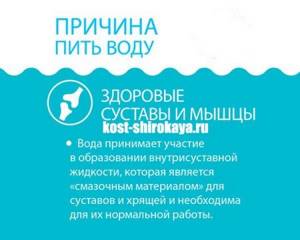
Water deficiency leads to thinning of the protective mucus in the stomach and intestines, which provokes an increase in the amount of salts. What should the body do? It is impossible to remove these salts through urine or sweat and the body dumps them into places where there are no blood vessels: into tendons, joints, ligaments and cartilage.
- After an injury.
Don't neglect warming up. Any workout should begin with a warm-up. It increases blood flow in the muscles, increases the extensibility of tendons, and prepares the cardiovascular and respiratory systems. Any professional will tell you: “lack of warm-up is the path to injury.”
In addition, follow the exercise technique. Many people work out in basement gyms without a trainer, and then complain about problems with their joints. A qualified trainer not only selects an adequate load for the athlete, but also carefully monitors the exercise technique.
Conclusion: the most useful thing you can do in such a situation is to give the joint a break, accustom yourself to perform special joint exercises and eat foods that contain a lot of protein.
If you are still worried about this, then visit a doctor and ask him carefully: peace of mind is above all!
This protective mechanism restores the necessary chemical parameters in the blood, but in these organs, salt deposits change the anatomical parameters, irritate the nerve endings, causing pain.
Many people treat joint pain with medications for a long time, but it stubbornly returns. Naturally, the main source of such pain is not eliminated - metabolic disorders due to chronic dehydration. Of course, this is not the only reason, but it is the one that MUST BE ELIMINATED FIRST.
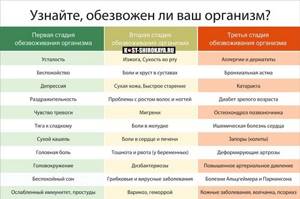
Only this should not be done in one day, but gradually increasing its amount to 2 tablespoons per 1 kg. weight in summer, and in winter by 0.5 liters. less.
In addition, you may swell from lack of water. How to deal with such problems - read the article!
Often joint pain appears as a result of injury, the cause is obvious: the injury itself.
The pain in the joint in this case is constant, felt at rest, but intensifies with movement, accompanied by slight redness of the skin in the joint area, swelling, and a significant limitation in range of motion.
If the pain in the joint area is not pronounced, there is no severe swelling of the joint, the contours of the joint are normal (not deformed), it is enough to take the following measures:
- try to provide maximum peace to your wounded soldier. You can use an elastic bandage that is wrapped around the joint, covering the area above and below the joint.
- On the first day after the injury, to prevent swelling, apply a cold compress to the joint area for 20-30 minutes (but no more!).
In the next 24 hours after the injury, warm (not hot!) compresses are applied to the joint area, which improve blood circulation and promote the rapid restoration of damaged joint elements.
- It is worth giving the joint an elevated position (for example, placing a pillow under the injured ankle).
- BUT: there is no need to endure and suffer, if after the measures taken, the pain in the joint remains the same or intensifies, and swelling and redness also intensify, immediately go to a traumatologist.
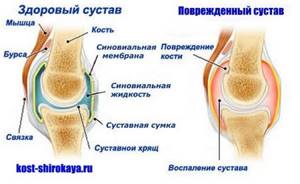
If joint pain is severe, you can use an ointment or cream with an anesthetic effect.
How to Manage Pain: A Breakdown of Collagen Supplements for Joints
- Joint pain due to excess weight.
- Joint pain of varying intensity - in the early stages of the disease, joint pain is insignificant, then it becomes more pronounced.
- As a rule, osteoarthritis affects the joints that bear the greatest load: the hip, knee, and ankle joints.
- Pain in the small joints of the fingers is also characteristic of osteoarthritis.
- Joint pain intensifies in the evening and may occur during sleep.
- Sharp “jamming pains” are very strong, occur suddenly, and deprive the patient of the ability to carry out movements in the affected joint.
These joint pains in obese people (also in the elderly) are caused by chronic diseases associated with the slow destruction of cartilage tissue. Such diseases are also called degenerative.
Long-term, gradually progressive joint pain in obese people usually occurs as a result of osteoarthritis (osteoarthritis). The main symptoms of osteoarthritis are:
There is a similar opinion: every kilogram of a person’s weight creates a sixfold load on the knee joint. Just think! Excess weight is the main source of all knee problems. If you weigh 5 kilograms more than expected, this means that your knee is under an extra 30 kilograms of stress.
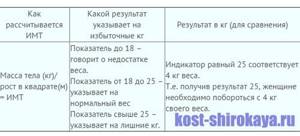
And our back also has a hard time. The greater the weight, the more pressure it puts on the spine and the greater the likelihood of developing pathologies in the musculoskeletal system.
Many experts give the example of a heavy backpack. After you wear a backpack weighing 5 kg for 3 hours, you will certainly feel relief when you take it off. But the spine and joints do not have the opportunity to remove the load in order to rest. And they have to not only walk, but also run and jump with extra pounds (and this is even more pressure).
An important part of the joints in the form of cartilage tissue, when the body mass index (BMI) is exceeded by at least one point, wears out faster by 11% (!!!). But cartilage restoration takes decades. It is at this point that the negative impact of extra pounds on the joints arises.
Possible manifestations of pathological changes in joints with excess weight:
- Osteochondrosis. A minimal amount of physical activity and any movements, as well as age-related degenerative changes, lead to the fact that cartilage loses its elasticity and can change shape and consistency.
- Arthritis and arthrosis. Joint destruction is caused by weight-bearing pressure. Those. joints are simply injured under strong pressure on them. Excess weight equals bumps and bruises.
The main symptoms of joint diseases are:
- Joint pain occurs suddenly or increases over 1-2 weeks. The pain is felt throughout the entire joint, can radiate to the surrounding muscles, and intensifies at rest and in the morning.
See a doctor immediately!
Pain is the first alarm signal about problems in the body. When talking about joint pain, you need to understand that a number of pathological conditions can be the culprit for its occurrence. Their treatment may differ significantly, which depends on the localization of the pathological process, its stage, time and causes of occurrence, previous treatment, individual characteristics of the functioning of the whole organism and concomitant diseases.
Arthrosis
- use of medications;
- use of elastic bandages;
- state of rest.
Diagnostics at a medical center will be able to accurately determine the cause of pain in the elbow joint
Arthrosis
Causes of peeling skin on the elbows, stages and forms of treatment
Peeling skin on the elbows is a fairly common occurrence.
Unfortunately, people suffering from this problem do not notice it immediately and seek help only when the skin takes on an aesthetically unsightly appearance or characteristic itching appears in the elbow area.
There may be several reasons for this condition, but only a consultation with a dermatologist, based on the results of a study of the epidermis, will help eliminate the disease.
Factors causing the development of the disease
Doctors say that the condition of the skin completely reflects the physical and psychological health of the entire human body. The first and most common cause of peeling skin on the elbows is failure to comply with the rules of hygiene in this area of the hands.
Most often, office workers face problems with rough skin - people who spend a long period of time at a desk, intuitively leaning on it with their elbows. Due to regular pressure and friction against a hard surface, the skin of the elbows begins to roughen and then peel off. In this case, only regular skin care and preventive procedures can eliminate the problem.
The main reasons for the appearance of rough and flaky skin on the elbows:
- Individual intolerance to certain cosmetics - gels, toilet soaps, creams;
- Skin diseases – psoriasis, various types of dermatitis, allergic manifestations;
- Improper and unbalanced nutrition, vitamin deficiency. In this case, it is a lack of vitamins E, D, A, microelements - iron and magnesium;
- Regular contact with a humid environment, work in conditions of high humidity;
- Hereditary predisposition to dry epidermis in the joint area;
- Diabetes mellitus and other diseases of the endocrine system;
- Nervous breakdowns, depression, overexertion and stress;
- Wearing specialized clothing made from rough fabrics.
Each of the factors can be the direct cause of the problem of dryness and flaking of the skin, but only a specialist can clearly determine this.
In any case, if your skin is dry, and your professional activity is associated with possible external influences on the epidermis in the elbow area, take preventive measures to localize the disease - replace detergents, use softening creams and compresses.
If the skin is rough and cracked, do not clean it yourself under any circumstances, to avoid infection in the wounds.
Folk remedies for moisturizing
If the cause of peeling skin is not related to changes in your health, but depends only on external factors, use the following methods to eliminate the problem:
- Once a day, lubricate your elbows with natural olive oil;
- To soften, use a homemade ointment made from baby cream and table salt;
- Glycerin-based ointment with the addition of a small amount of salicylic ointment and olive oil;
- Provide your skin with external vitamin-rich nutrition - apply a slice of fresh grapefruit or orange to rough skin.
Perform activities only after taking water hygiene procedures, preferably at night. Hold the compresses for at least 20 minutes, then treat your elbow with warm soapy water, dry it and lubricate it with a nourishing cream based on natural ingredients.
Another recipe that helps soften the skin of your hands and prevent flaking is a cream made from almond oil and natural honey. It is advisable to leave such a compress overnight, after applying sterile cotton wool, polyethylene and a fixing bandage to the elbow.
Drug therapy
Treatment of peeling skin with medications is used in cases where the cause of the problem is diseases of the internal organs or the human endocrine system. Please note that the main stage of therapy is the elimination of the underlying disease, so such treatment can be considered comprehensive.
- Ailments associated with pathologies of the endocrine system. Symptoms often include general weakness, increased sweating, bradycardia, and swelling. Along with this, the skin in the area of the elbow joints becomes dry and rough, itching and peeling are noted. A dermatologist may prescribe hormonal-based medicinal ointments or gels that can relieve itching and restore the normal state of the epidermis.
- Psoriasis. Affected areas of the skin are the main sign of beginning psoriasis. The lesions are localized on the head, legs and arms in the elbow area. It is impossible to get rid of the disease completely, but you can stop its progression and cleanse rough areas of the skin. For treatment, specialists prescribe antiallergic, vitamin and antihistamine medications that moisturize the skin and prevent further peeling.
- Diabetes. In this case, topical medications will only help moisturize the skin, but not cure it. It is possible to completely get rid of the problem by carrying out maintenance therapy and radically changing your lifestyle - dietary nutrition, giving up bad habits;
- Impaired metabolism and vitamin deficiency. The first thing a doctor pays attention to when identifying such ailments is the saturation of the body with vitamins and microelements. If the problem appears in the winter, multivitamin and mineral complexes may be recommended. In summer, the need comes down to reviewing nutrition and including a certain group of fruits and vegetables and freshly squeezed juices in the diet.
But even if you are completely sure of the source of the problem, do not rush to make a decision yourself. Perhaps the reason for peeling skin on the elbows is completely different. Consult with experts and follow their recommendations.
Pharmacy drugs
Today, the pharmaceutical industry offers a wide range of dosage forms that moisturize and restore the epidermis. Ointments, gels and creams based on natural ingredients help to quickly restore the top, rough layer of skin.
When choosing drugs, be sure to pay attention to the components included in its composition. The instructions should state that the ointment or gel is used for external use. The operating principle of almost all products is the same - they soften rough skin, then nourish it, and after that they cover the elbow with a thin layer of protective film.
As a rule, in such ointments, manufacturers use only a few basic ingredients, changing only the composition of vitamins and microelements. These are mink oil, lanolin, urea and cocoa.
In some cases, oils saturated with glycerides - mango, peach, shea butter - can be added to them.
Cosmetics based on these components are also used in preventive measures when there is a risk of dry or flaky skin.
Restoring elasticity and color
After treatment and procedures to cleanse the epidermis, areas of the skin acquire an unpleasant reddish tint. In order to restore the elasticity of the skin and give it a healthy tone, you can perform a number of procedures:
- Apply a compress of grated raw potatoes to your elbow and leave for 40-60 minutes;
- Use a compress made from a mixture of ammonia and liquid soap. The components are used in equal proportions and held in the problem area for half an hour;
- Vinegar solution based on liquid soap. The product is rubbed into the problem area, and after 10-15 minutes it is washed off with warm running water. After this, a nourishing cream is applied to the dried elbow;
- Herbal baths. Sage, chamomile, string and mint are steamed in equal proportions and then diluted in a small amount of warm water. The elbows are kept in the bath for 15-20 minutes.
Peeling skin on the elbows, even if the problem is caused by external factors, causes a lot of unpleasant emotions. First of all, this is due to an unsightly aesthetic perception. Before taking any measures to eliminate it, get qualified advice from a specialist.
Perhaps the reason for this skin condition lies in something small, and it is possible to improve the health of the epidermis at home, without resorting to drug treatment.
If you belong to an occupational risk group, follow basic hygiene rules, take preventive measures and regularly monitor the condition of the skin on your elbows.
Source: https://stylish-lady.ru/body/prichinyi-vozniknoveniya-shelusheniya-kozhi-na-loktyah-etapyi-i-formyi-lecheniya.html
Methods to combat dryness
To completely overcome dryness, it may take from 1 to 2-3 months if the process is performed regularly:
- First you need to remove the dead rough layer.
- Then begin intensive moisturizing.
- The final stage of care is moisture retention.
To remove the rough layer, special peels with salicylic or fruit acid are used. However, the frequency of procedures should not exceed 1-2 per week. If you do them more often, it will provoke the growth of new cells, as a result of which the rudeness will only intensify.
Important! You need to moisturize your knees every day, morning and evening, using high-quality cream or milk with optimal fat content. Determining whether cosmetics are right for you or not is quite simple. If 30-50 minutes after applying the drug the skin becomes dry again, and this continues even after 2-3 weeks of using the product, you should change it.
The third stage involves the use of drugs that create an invisible film. It prevents moisture from escaping. Natural vegetable oils best cope with this task (cocoa, shea, shea).
After eliminating all unpleasant symptoms and getting rid of rough knees, you should switch to a preventative regimen. The same products are used, but not every day, but 1-2 times every 2 weeks.
Folk recipes
Simple home remedies, products that are sold in all stores, are highly effective in the fight against rough knees: Margarita Levchenko: facial gymnastics
To prevent rough knees from appearing in a child prone to pathology, you can simply wipe them with half a lemon. This method will be an excellent prevention of rough skin in adults.
It should also be noted that excessive love for hot baths can lead to roughness in the knees and elbows. Water procedures dry out the skin, so it is important to use moisturizers after any shower or bath. You also need to be careful about your diet, exclude harmful foods and include healthy ones.
Alas, body care is carried out very unevenly. Some of its zones receive maximum attention, while others are not remembered at all.
Quite often they completely forget that elbows also need proper care, hydration and nutrition. This happens for several reasons:
They do not come into the constant field of view of their owner;
Most of the time they are hidden under clothing;
Some consider such care unnecessary and unjustified.
Most often they are remembered with the arrival of the spring-summer period, when it is time to put on T-shirts and short-sleeved blouses, dresses and sundresses. This is where they begin to wonder: why on the elbows and, most importantly, how to get rid of this problem as quickly as possible, returning them to a presentable appearance?
First, you should determine the cause of the dryness, as treatment may depend on this.
